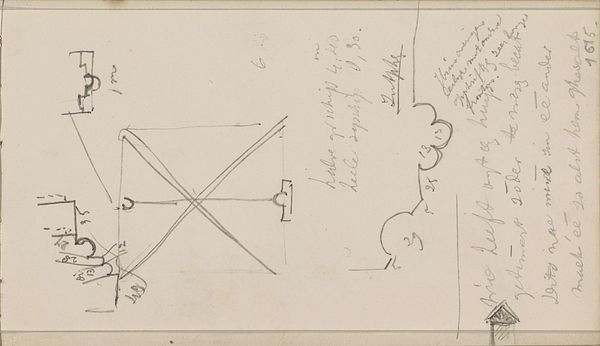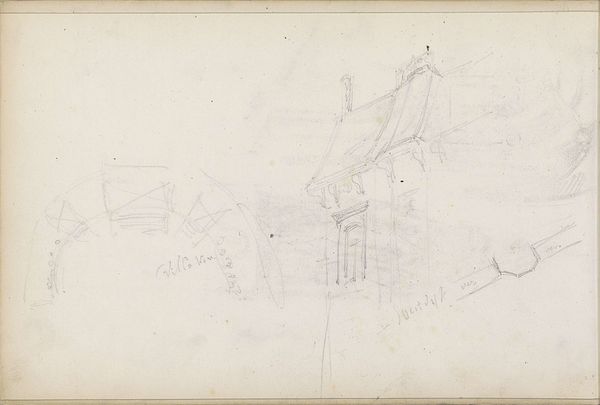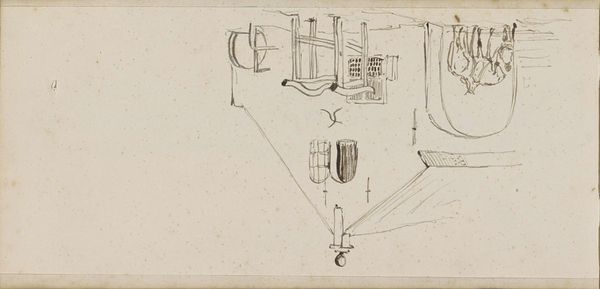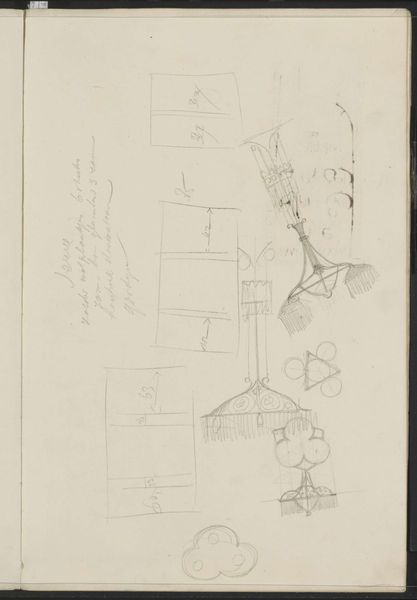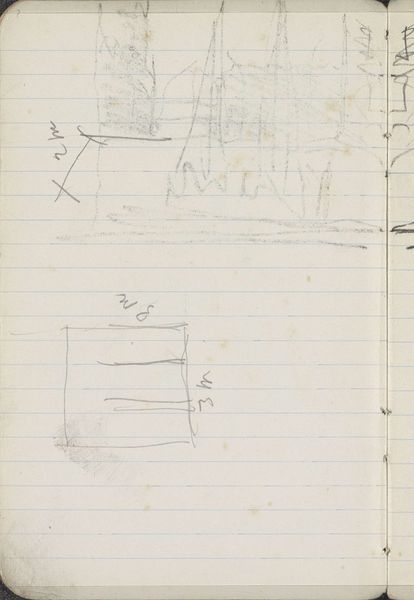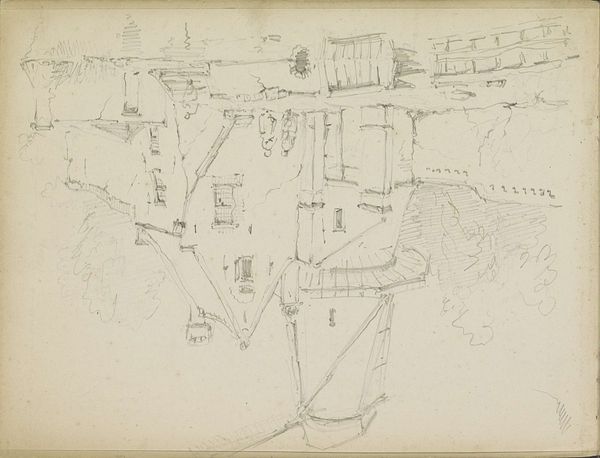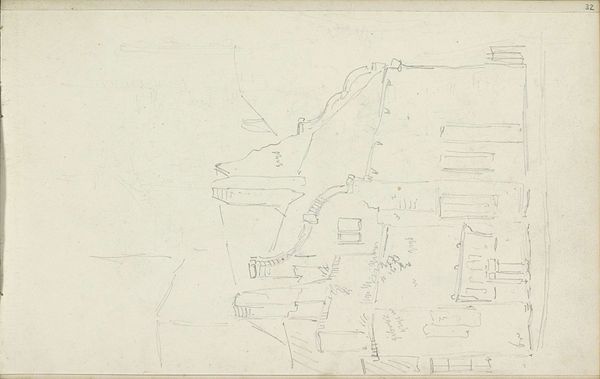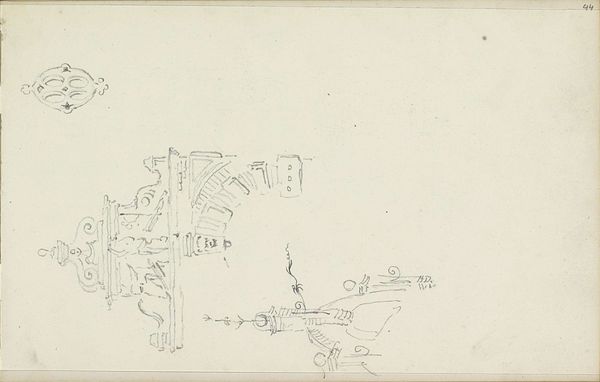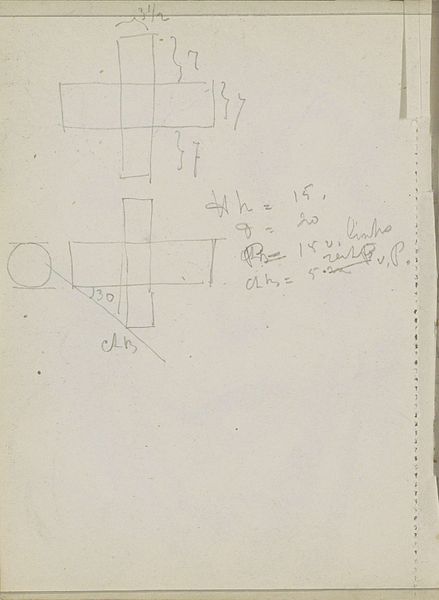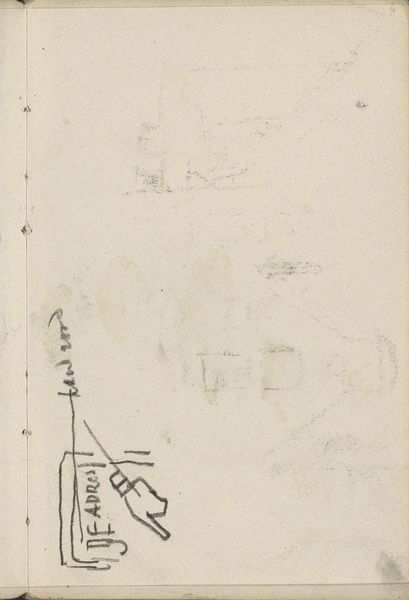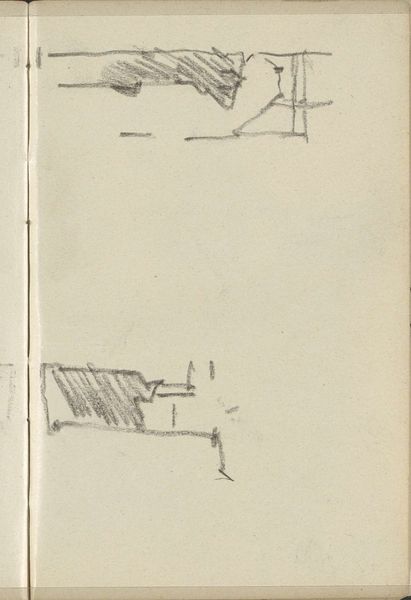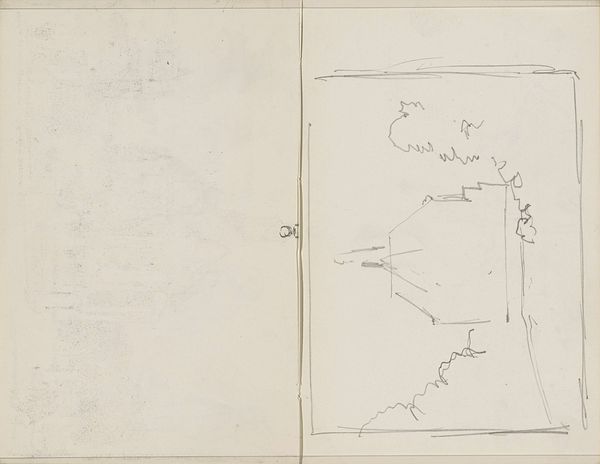
drawing, paper, pencil
#
drawing
#
paper
#
form
#
geometric
#
pencil
#
line
#
academic-art
Copyright: Rijks Museum: Open Domain
Curator: Looking at this intriguing drawing, rendered in pencil on paper by Isaac Gosschalk between 1866 and 1868. It's titled "Kroonlijst," which translates to "Cornice" or "Crown Molding." Editor: My immediate reaction is to its feeling of a palimpsest – all those overlapping lines, ghostly notations, as if it contains layers of intentions and corrections from a bygone era, the beginnings and abandonments of many mental states... Curator: I’m drawn to considering how academic art production in the mid-19th century grappled with architectural and cultural memory. The cornice here serves as a form, but more importantly as a building block of identity, reflective of Dutch revivalism and emerging national aesthetics. These forms can act as ideological vessels of nation-building. Editor: Absolutely, I see that. It's fascinating how even a seemingly simple drawing of a cornice becomes imbued with significance when considering the history embedded within architectural forms and decorative elements, but, beyond nationalistic symbolism, don't you see remnants of something that seems like nature? Curator: That’s insightful. Perhaps, but I think seeing a nature symbol could be interpreted as a connection to 19th-century Romanticism or maybe as the organic origins from which formal construction developed, perhaps the artist, or architectural establishment wanted to emphasize control of something beyond natural reach. Editor: Hmm, maybe so... The geometry definitely lends itself to something more deliberate, the human imposition upon a previously amorphous void of the "blank page." These numbers meticulously noted here and there; all speak to the desire to translate inspiration into calculation; it feels so austere and technical, it gives much food for thought! Curator: I agree completely! Looking closely at this drawing offers profound perspectives on historical intention within formal composition, beyond the surface itself. Editor: And through deciphering this visual language, perhaps we also get a clearer look at our own relationship with these building blocks of culture and ourselves.
Comments
No comments
Be the first to comment and join the conversation on the ultimate creative platform.
